How to Make Paneer at Home
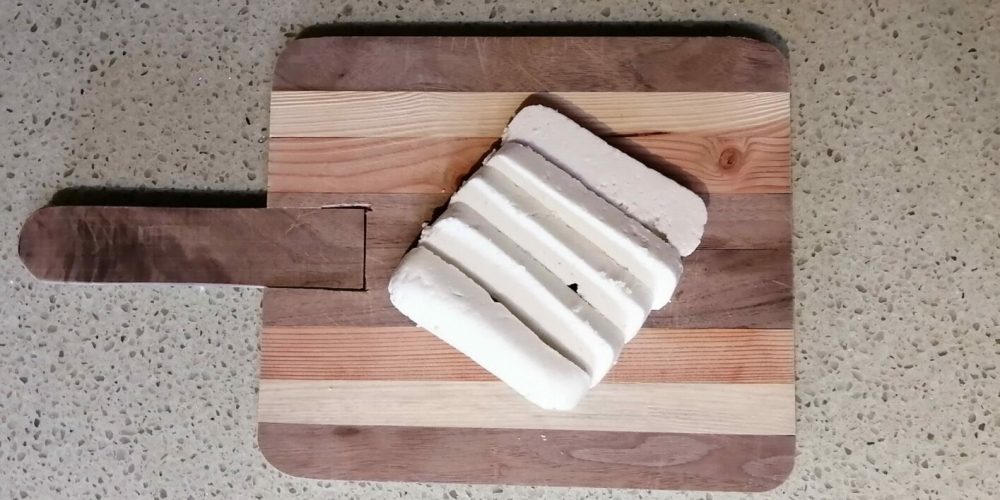
Paneer is a cheese commonly used in the Indian subcontinent and it is basically made the same way as Ricotta. The difference between ricotta and paneer is that paneer is always made with milk and not with added whey. Paneer is pressed and has a lower moisture content, whereas ricotta stays in a soft, spreadable consistency. The unique property of paneer is that it doesn’t melt; Therefore, it can be fried or deep fried. Check out our Paneer Sticks recipe here.
Check out our post on How to Make Cheese at Home to learn the art of making cheese. It’s a fun project for everyone.
For easy homemade cheese recipes check out our Cheese Making Recipes page.
If you are interested in the world of cheese making, visit our cheese Resource page and our How Cheese is Made post.
We review and suggest Cheese Making Kits here if you would like to get started with making cheese.
Enjoy!!!
Ingredients:
- 2 L/ 2 qrt of whole milk, homogenized store bought milk works well
- Approx. ⅓ of a cup of vinegar or lemon juice. The amount varies a bit according to the type of milk and the type of acid used.
Tools:
- Pot
- Kitchen strainer
- Pasta strainer
- Cheesecloth
- Optional: cheese mould
Procedure:
- Prepare your kitchen strainer and pasta strainer, or if you prefer, a cheese mould. Make sure it is clean and rinsed with warm water.
- Line the pasta strainer with cheesecloth. Prepare the vinegar.
- Pour your milk into the pot and start heating on medium heat while stirring. You can’t stop stirring, the milk will stick to the pan and protein might separate as a thin layer on top of the milk.
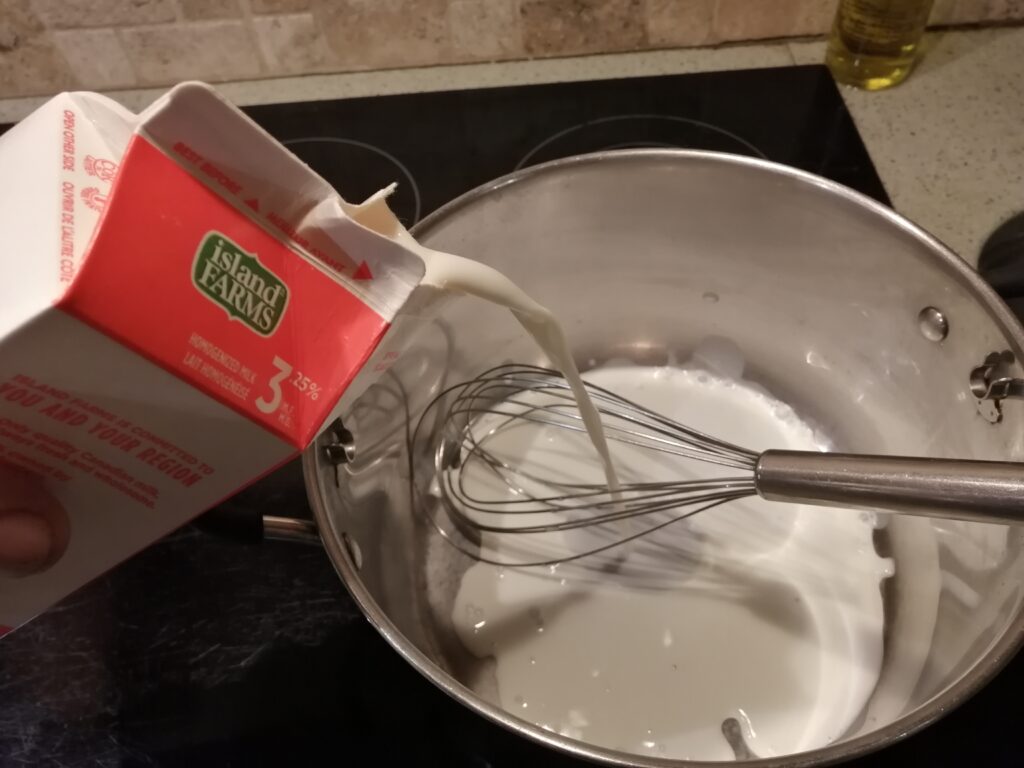
Homo milk works fine to make paneer.
- Once the milk starts to steam, use your thermometer and heat the milk until it shows 90 C/ 194 F.
- Remove the pot from the heat, and under constant but gentle stirring, add vinegar or lemon juice. Add it slowly while slowly stirring.
- When the acidity has dropped enough, the milk will quickly coagulate and start to make flakes, then lumps. You will see how the milk solids separate from the whey. It will become curdled milk. Immediately stop adding acid.

Adding apple cider vinegar.
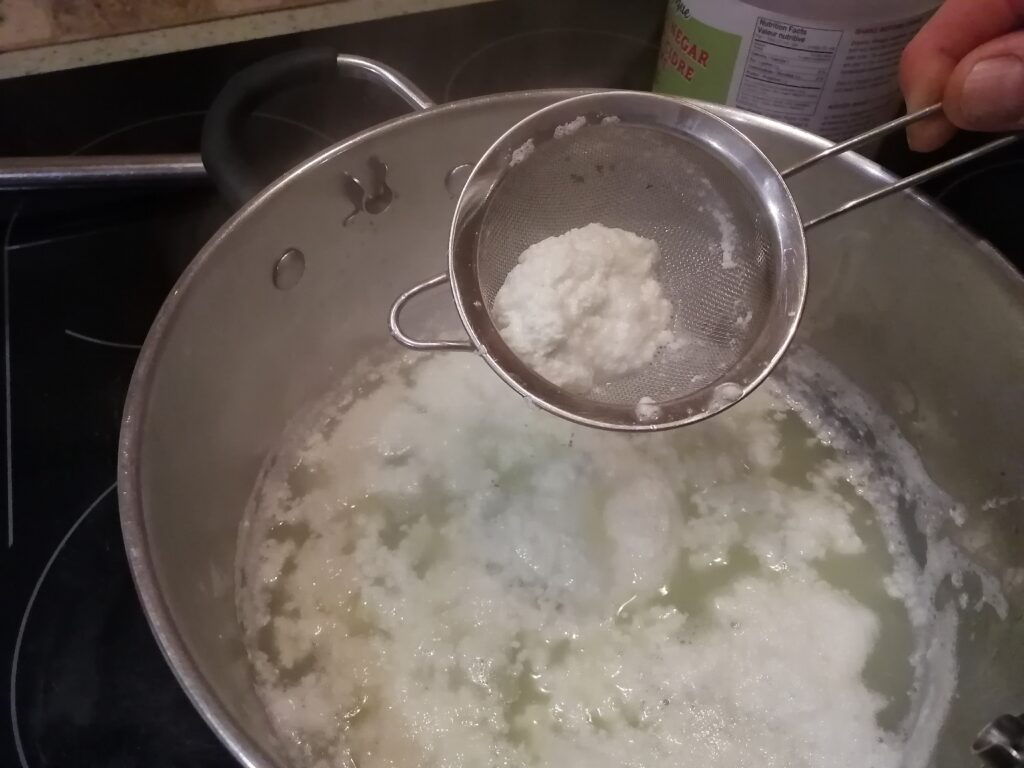
Scooping out the curdled paneer.
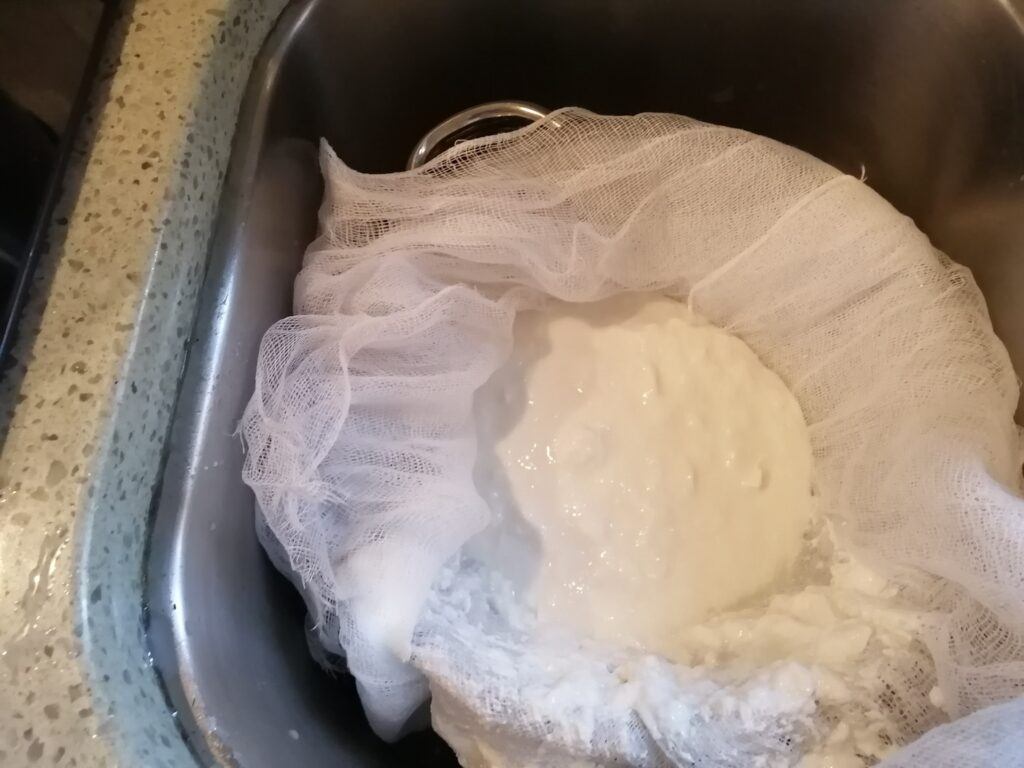
The curd is draining.
- Let the curd firm up for 2 minutes then scoop the cheese with the kitchen strainer into the pasta strainer or your cheese mould. You can also pour the entire pot directly into the pasta strainer, just be careful because it will be very hot.
- Close the cheesecloth and twist it to remove the whey. You can also add a plate with a water bottle on it to press it. If you have a cheese mould, transfer the curd into the mould and slightly press it. Paneer drains very fast. Press the curd for about 1 hour, depending on the press weight. You can get away with not pressing it at all, just let gravity drain it for about 3 hours. Keep flipping the cheesecloth or the cheese mould. The cheese must be firm enough to cut.
- Paneer is often cubed or cut in stripes. I found it works well to place the cheese, along with the cheesecloth, into a square tupperware to give it a square shape. Keep the access whey drained from the tupperware so the cheese can keep drying. You can also drill some holes into a tupperware so the whey can drain away.
- Once the cheese has drained and has reached the desired consistency, cool it down by putting it into a bowl with cold water. Traditionally, paneer is not salted.
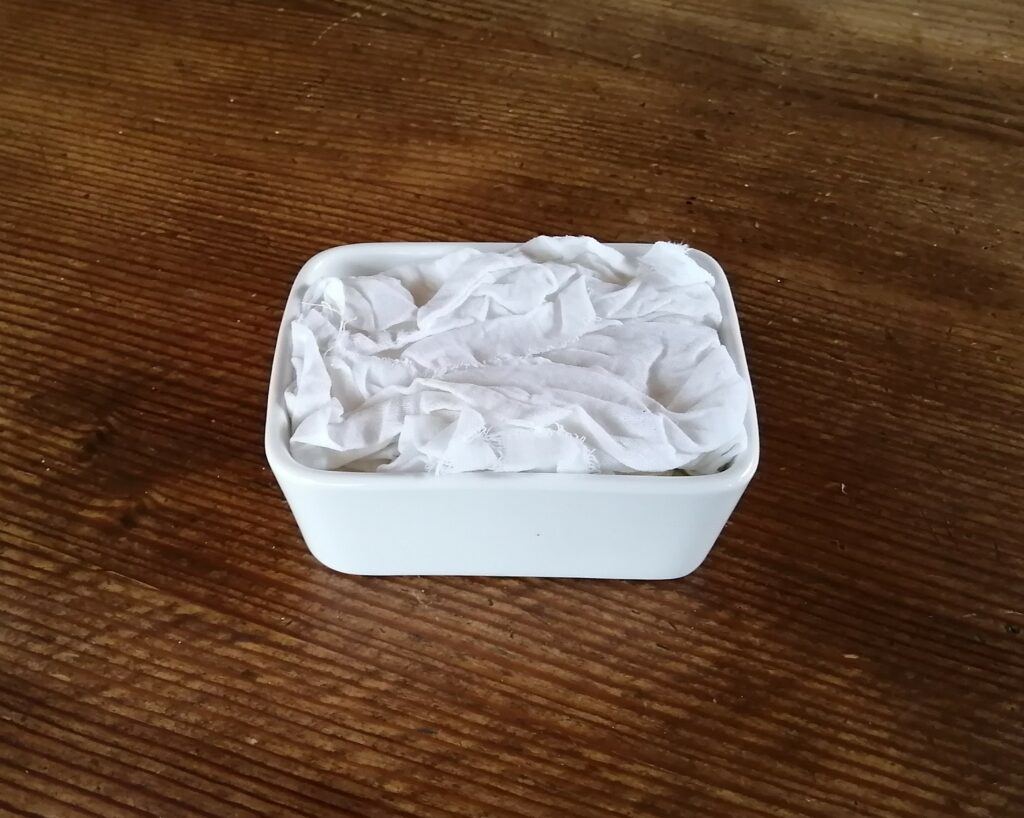
Paneer is shaped into a square
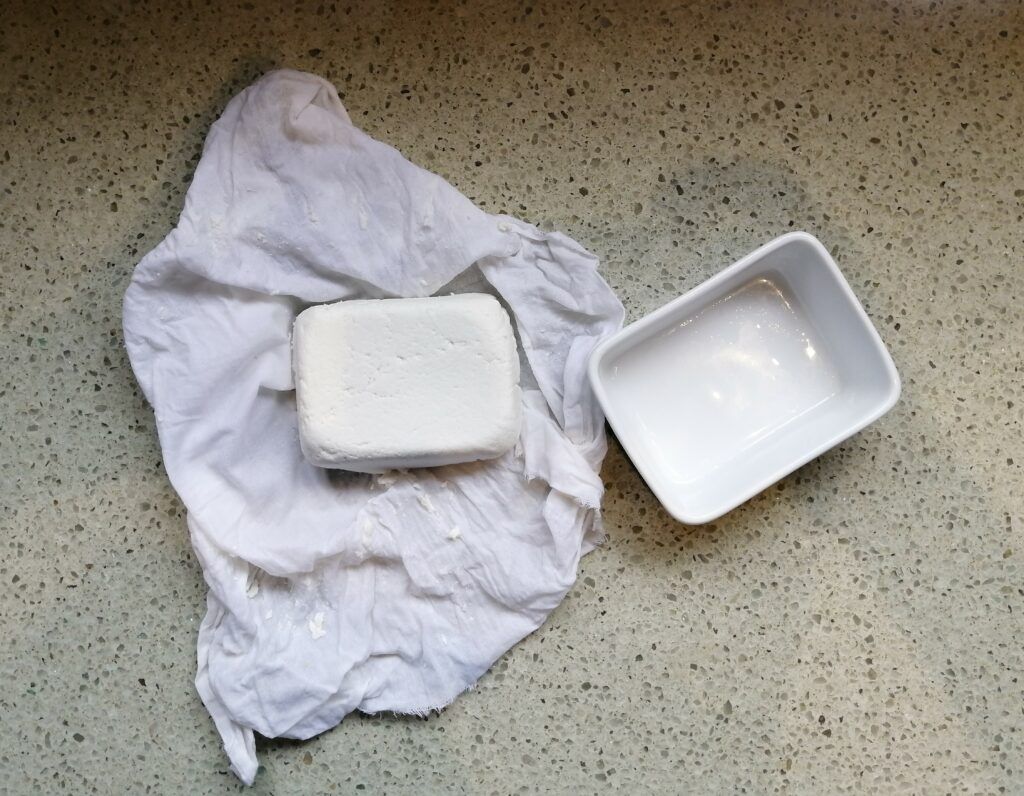
Taking paneer out of the cheesecloth
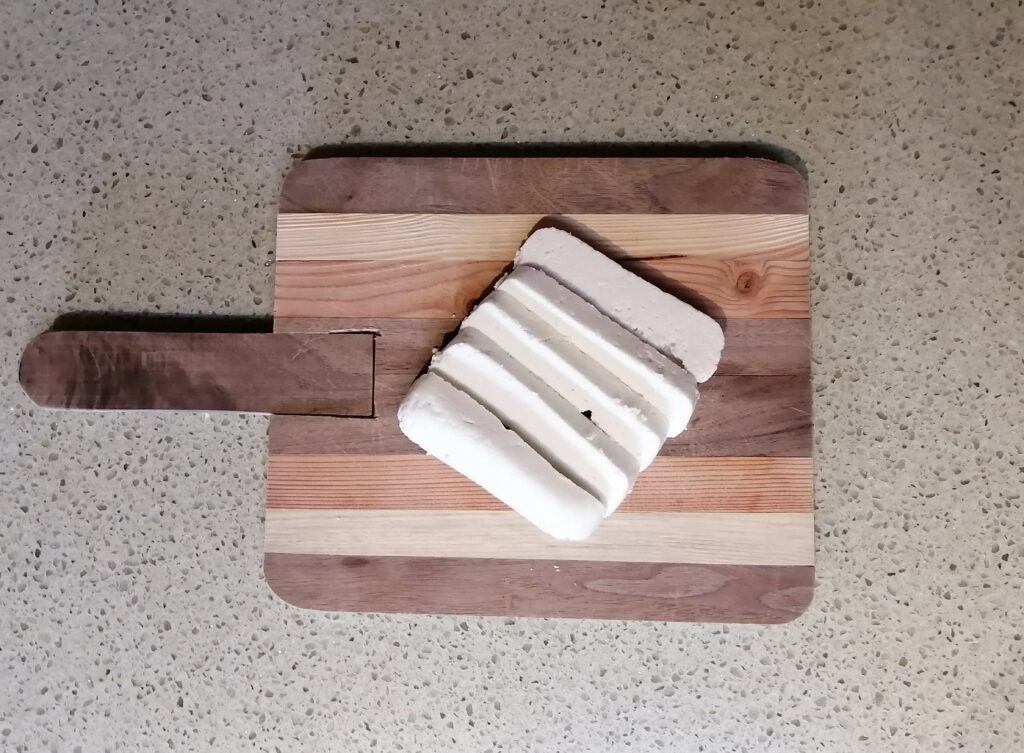
Cutting into stripes
- Now you can cut the cheese into convenient pieces and refrigerate it for up to 10 days. If you want to keep it longer, I recommend vacuum packing or freezing it.
Check out the recipe page for our Paneer Sticks with peanut butter sauce.
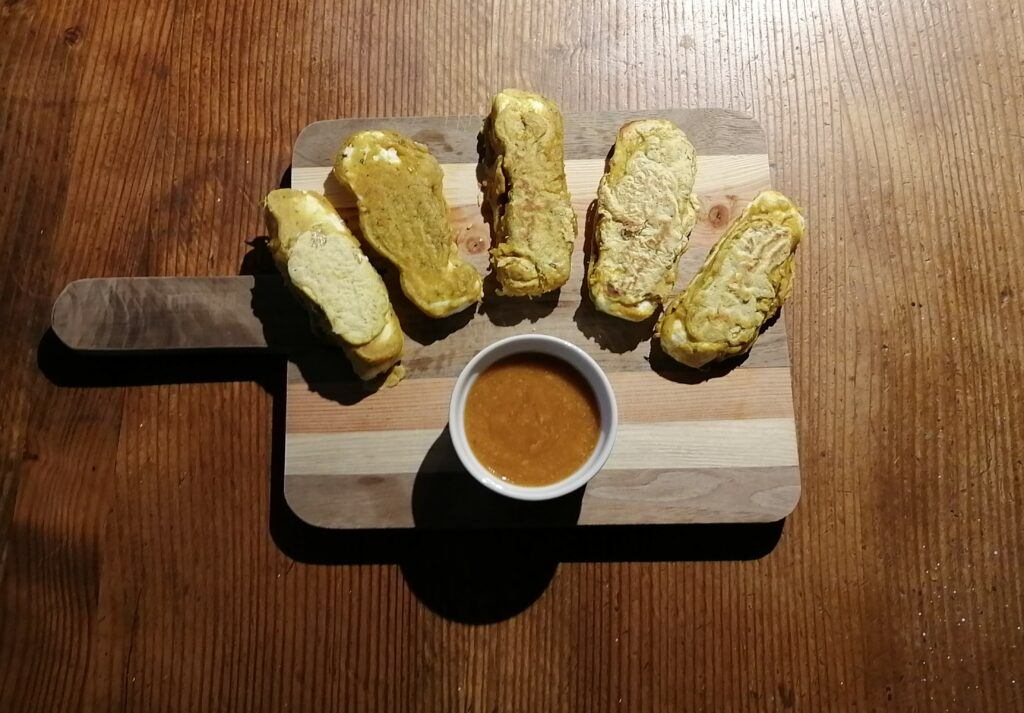
Troubleshoot
- The milk coagulates before you add the acid. This can happen when your milk is not fresh. The older the milk is, the more acidic it gets. If this happens, don’t worry about it. As long as your milk tasted fine to begin with, your paneer will be fine as well.
- You added a lot of acid and the milk didn’t coagulate. It only made a very fine curd, which can hardly be scooped. This can happen to goat milk. You can pour the curd into a very fine meshed cloth, trying to retrieve as much of the fine curd as possible. This can also happen to milk that came from an unhealthy animal. In the article about “what to know about cheese”, I talk about somatic cell counts. A high somatic cell count can cause this problem in your paneer.
- The paneer tastes vinegary. You used too much vinegar. Add it very slowly and at the first sign of coagulation stop adding the vinegar. If you still detect a vinegar taste, use citric acid instead.
Leave us a comment below about how your recipe turned out. Feel free to suggest ideas or what you would like to see in our recipes.
Enjoy!!!




